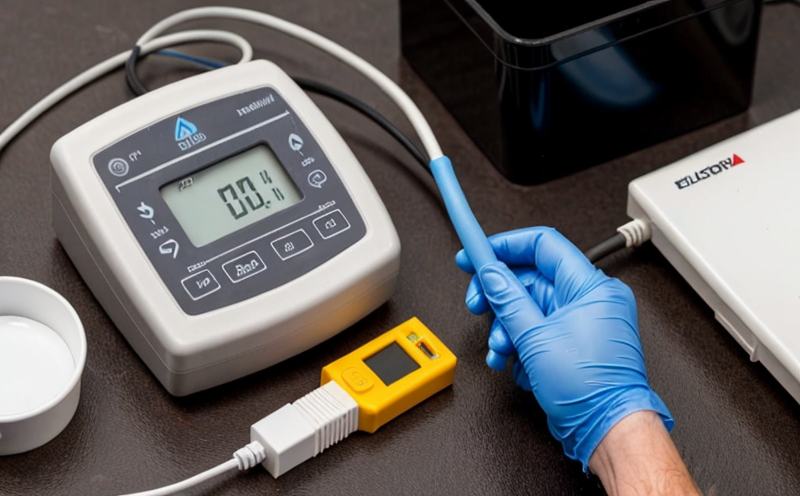ASTM G5 Potentiodynamic Anodic Polarization Testing
The ASTM G5 potentiodynamic anodic polarization test is a critical procedure used to assess the corrosion resistance of metal and alloy specimens in aqueous environments. This method is particularly useful for evaluating materials that are exposed to various corrosive conditions, such as those found in industrial settings or natural environments.
During this testing process, the specimen is immersed in an electrolyte solution under controlled potential conditions. The polarization curve obtained from this test provides valuable information about the corrosion behavior of the material by measuring its tendency to corrode and the current density at which it begins to do so. This data can be used to determine the critical pitting or stress-corrosion-cracking thresholds for different materials.
The ASTM G5 procedure is widely accepted in industries where material integrity is paramount, including chemical processing plants, oil refineries, and marine environments. Compliance with this standard ensures that manufacturers adhere to stringent quality control measures and can demonstrate the reliability of their products under potentially harsh operating conditions.
This test method is part of a larger suite of electrochemical tests designed to evaluate various aspects of metallic corrosion. Other relevant standards include ASTM G61 (cyclic polarization testing) and ASTM G75 (time-corrosion potential measurement). Together, these methods provide comprehensive insights into the corrosion susceptibility of materials.
For accurate results, proper specimen preparation is essential. This includes ensuring that all surfaces are clean and free from contaminants before immersion in the electrolyte solution. The choice of electrolyte concentration depends on the specific application but typically ranges between 0.5 M to 3 M depending on the material being tested.
| Material Type | Electrolyte Concentration (M) | Temperature Range (°C) |
|---|---|---|
| Steel Alloys | 1.0 M NaCl | 25 ± 3 |
| Copper-Based Alloys | 2.0 M NaCl | 30 ± 2 |
| Titanium and Its Alloys | 1.5 M NaCl | 27 ± 4 |
The polarization curve obtained from this test is a plot of current density versus applied potential. By analyzing the shape and position of the curve, technicians can identify key parameters such as the anodic activation potential (Ea), the corrosion current density (Icorr), and the passive breakdown voltage (Epb).
Understanding these values helps in predicting how a material will perform under real-world conditions. For instance, if the Icorr is very low, it indicates excellent resistance to localized corrosion like pitting or crevice corrosion. Conversely, high Icorr suggests higher susceptibility to such forms of attack.
Benefits
- Predictive Capability: Provides insight into the future performance and durability of materials in corrosive environments.
- Regulatory Compliance: Ensures adherence to industry standards like ASTM G5, promoting trust among clients and stakeholders.
- Enhanced Reliability: Helps manufacturers ensure their products meet high-quality standards before deployment.
- Data-Driven Decision Making: Supports informed decisions regarding material selection and process optimization.
International Acceptance and Recognition
The ASTM G5 potentiodynamic anodic polarization test is recognized globally for its robustness and accuracy in evaluating the corrosion resistance of metallic materials. Its widespread adoption across numerous industries underscores its importance in ensuring product reliability.
This standard is particularly valued by organizations operating in sectors where material integrity is critical, such as aerospace, automotive, and nuclear power generation. By adhering to ASTM G5 guidelines, companies can demonstrate their commitment to maintaining high standards of quality and safety.
The international recognition of this test method also facilitates smoother collaboration between different entities involved in the supply chain, from raw material suppliers to final product manufacturers. It fosters a shared understanding of acceptable performance levels, which is essential for seamless global operations.
Use Cases and Application Examples
- Aerospace: Evaluating the durability of fasteners and structural components exposed to high humidity environments.
- Automotive: Assessing exhaust system components for resistance against chloride-induced corrosion.
- Offshore Oil & Gas: Testing pipelines and pumps used in harsh marine environments.
- Petrochemical: Investigating storage tanks and valves subjected to aggressive chemicals during processing.





